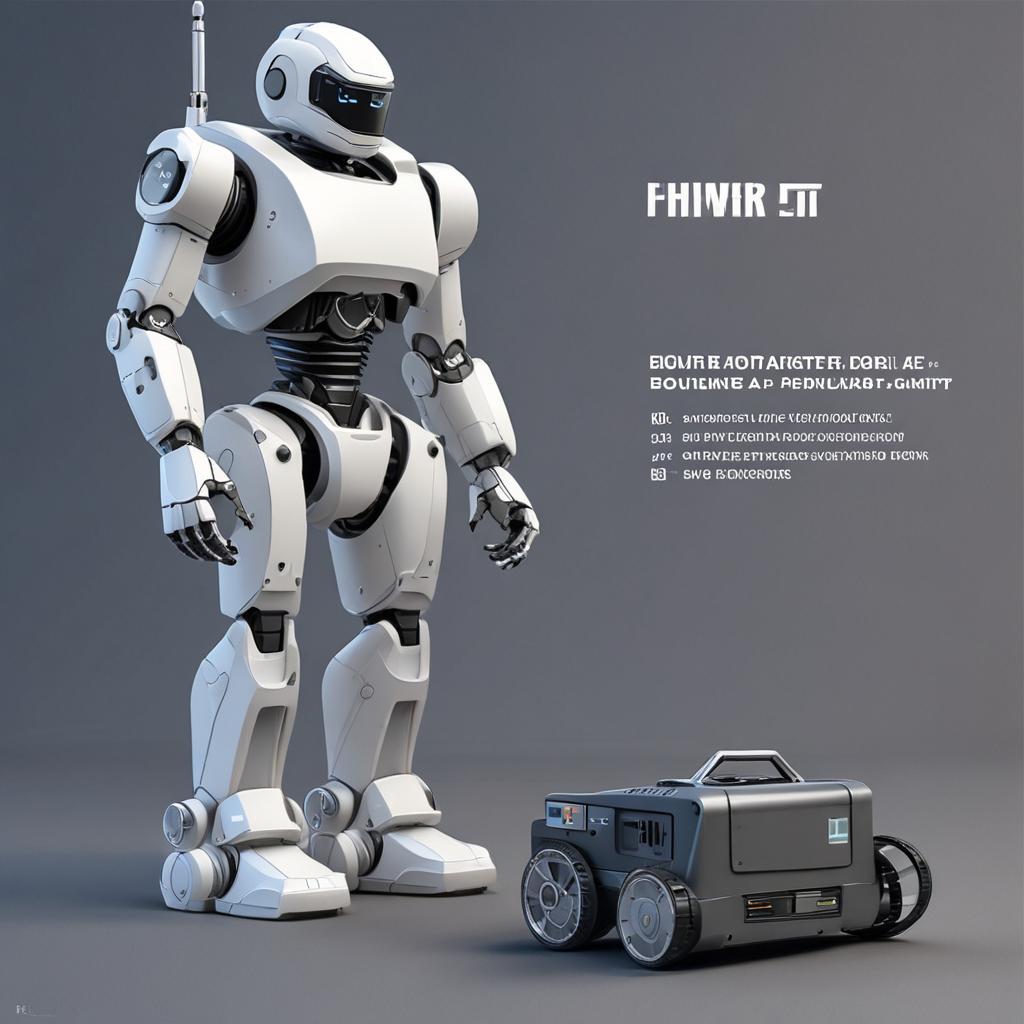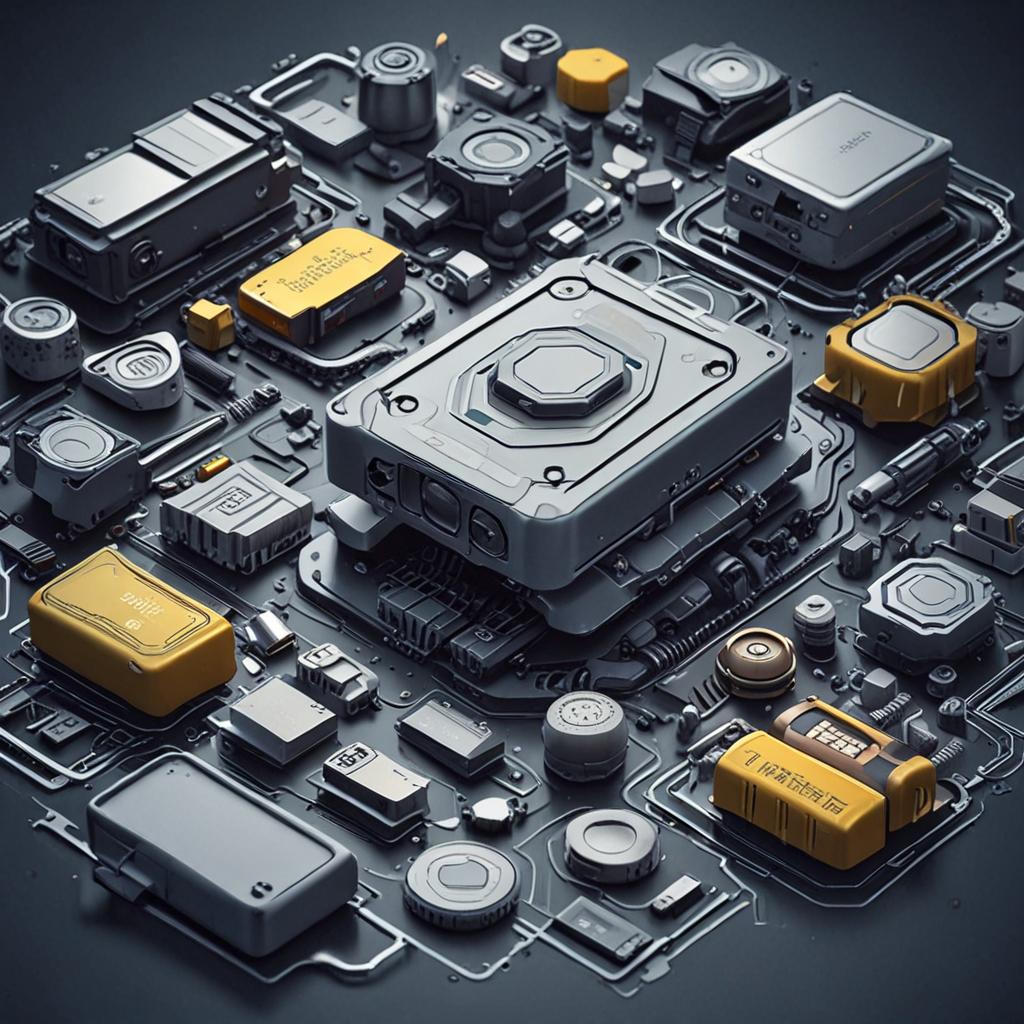Table of Contents Show
Powering a mobile robot effectively is one of the most critical decisions in robotics design. Without a reliable and efficient energy source, even the most advanced robot can fail to perform its intended tasks. Whether you’re building a small educational robot or a robust industrial machine, your choice of power source directly impacts performance, mobility, and longevity. Two popular options stand out: traditional batteries and commercial power banks. While both deliver electrical energy, they differ significantly in design, application, and long-term viability. Understanding their strengths and limitations is essential for making an informed decision that aligns with your robot’s requirements.
Step-by-Step Process
Assess Power Needs
Calculate the robot’s power consumption and runtime requirements.
Evaluate Battery Types
Compare lithium-ion, lead-acid, and other battery technologies.
Consider Power Banks
Analyze capacity, charging cycles, and compatibility with the robot.
Prototype and Test
Build a prototype using selected power source and conduct tests.
Optimize and Deploy
Fine-tune the power system based on test results and deploy.
Process infographic for How to Power a Mobile Robot – Batteries Vs Power Bank
Power Consumption Analysis
Every mobile robot consumes power based on its components, including motors, microcontrollers, sensors, communication modules, and onboard computers. For example, a robot with high-torque DC motors and multiple LiDAR sensors will draw significantly more current than a simple line-following bot with infrared detectors. To estimate power needs, calculate the total current draw (in amperes) of all active components and multiply it by the system voltage to get power in watts. This baseline helps determine the minimum capacity your power source must provide.

Operational Duration Considerations
The expected runtime of a robot plays a crucial role in selecting a power source. Robots designed for continuous operation—such as warehouse delivery bots or agricultural drones—require high-capacity, long-lasting energy solutions. In contrast, educational or prototype robots used intermittently can rely on smaller, less expensive power sources. Battery capacity, measured in milliampere-hours (mAh) or watt-hours (Wh), directly affects how long a robot can operate before needing a recharge or replacement.
Environmental Factors
Operating conditions such as temperature, humidity, and vibration can influence power source performance. Lithium-based batteries, for instance, degrade faster in extreme heat or cold. High humidity may lead to corrosion in exposed terminals or circuitry. When deploying robots outdoors or in industrial environments, it’s essential to use sealed, ruggedized power solutions and consider thermal management strategies like insulation or cooling vents to maintain optimal battery health.
Batteries for Mobile Robots
Types of Batteries
Dedicated batteries are often the preferred choice for custom-built or professional mobile robots due to their tailored performance and integration capabilities. The most common types include:
- Lithium-Ion (Li-ion): Known for high energy density, lightweight design, and low self-discharge, Li-ion batteries are ideal for robots where weight and runtime matter. However, they require protection circuits to prevent overcharging and thermal runaway.
- Lead-Acid: These are durable and inexpensive but heavy and less efficient. They’re typically used in large, slow-moving robots like automated floor scrubbers or security patrol units where weight is less of a concern.
- Nickel-Metal Hydride (NiMH): Safer than lithium variants and more environmentally friendly, NiMH batteries are often found in hobbyist robots. Their lower energy density and higher self-discharge rate make them less suitable for long-duration missions.
Battery Management Systems (BMS)
A Battery Management System is crucial when using rechargeable batteries, especially lithium-based ones. A BMS monitors cell voltage, temperature, and current to prevent overcharging, deep discharge, and short circuits. It also ensures cell balancing in multi-cell packs, extending overall battery life and enhancing safety. For reliable robot operation, always use a BMS that matches your battery type and voltage configuration.
Charging Solutions
Choosing the right charger affects both performance and lifespan. Slow chargers are gentler on batteries and help preserve cycle life, while fast chargers reduce downtime but can generate heat and stress cells. For routine maintenance, avoid letting batteries fully discharge and aim to keep them between 20% and 80% for optimal longevity. Use smart chargers that automatically switch to trickle mode when fully charged.
Power Banks for Mobile Robots
Types of Power Banks
Power banks—typically designed for smartphones and portable electronics—have become popular in robotics prototyping due to their convenience and availability. Key types include:
- Lithium-Polymer (LiPo) Power Banks: Offer a slim, flexible form factor and slightly better energy density than Li-ion. They are lightweight and ideal for small, agile robots but require careful handling to avoid punctures and swelling.
- Lithium-Ion Power Banks: Most commonly available, these are cost-effective and reliable for short-term or low-power applications. While standardized and safe for consumer use, they may lack the sustained output needed for high-drain motors.
Portability and Convenience
One major advantage of power banks is their plug-and-play nature. With built-in USB or DC outputs, they eliminate the need for complex wiring or custom enclosures. This makes them excellent for rapid prototyping, classroom projects, or temporary deployments. When selecting a power bank, ensure it provides adequate output current (e.g., 2A or higher) and matches the voltage requirements of your robot’s components.
Charging and Recharging Efficiency
Power banks are designed for frequent recharging, often supporting hundreds of charge cycles. To maximize lifespan, avoid leaving them fully drained or fully charged for extended periods. Store them at around 50% charge in a cool, dry place. Additionally, use reputable brands with overcurrent and overtemperature protection to reduce the risk of failure during robot operation.

Comparative Analysis: Batteries vs Power Banks
Cost Analysis
Power banks generally have a lower upfront cost and are widely accessible, making them budget-friendly for hobbyists and educators. However, they may not be cost-effective in the long run for industrial applications due to shorter lifespans and limited scalability. Custom battery packs, while more expensive initially, offer better return on investment for high-use scenarios thanks to superior durability and serviceability.
Performance Metrics
When comparing energy density, dedicated batteries—especially Li-ion—typically outperform most consumer-grade power banks. They also allow for higher discharge rates, which is essential for driving motors efficiently. Power banks, on the other hand, may throttle output under heavy load or shut down if current draw exceeds their safety limits. In terms of environmental impact, both options rely on lithium, but dedicated systems often support modular replacement and recycling, improving sustainability.
Use Case Scenarios
For research prototypes, student competitions, or short-term demonstrations, power banks offer unmatched convenience and speed. In contrast, autonomous delivery robots, inspection drones, or factory automation systems benefit from custom battery solutions that ensure reliability, endurance, and safety. For example, a university robotics team might use a 20,000mAh power bank for weekend testing, while a logistics company would deploy a 48V Li-ion battery pack capable of powering a robot for 10+ hours across multiple shifts.

Integration and Maintenance Tips
Integration with Robot Systems
When integrating any power source, ensure compatibility with your robot’s voltage and current requirements. Use proper connectors, fuses, and voltage regulators to prevent damage to sensitive electronics. Secure the power source firmly to avoid shifting during movement, and route cables safely to minimize wear. For power banks, verify that USB-to-DC converters or buck/boost regulators can handle the robot’s peak load without overheating.
Maintenance and Lifespan
Regular maintenance is key to maximizing the life of both batteries and power banks. Inspect terminals for corrosion, clean contacts periodically, and monitor for physical damage like swelling or leaks. For lithium-based systems, avoid full discharges and store at moderate temperatures. Calibrate smart batteries occasionally by fully charging and discharging them under controlled conditions to maintain accurate charge-level reporting.
Conclusion
Selecting the right power source for a mobile robot involves balancing performance, cost, convenience, and longevity. While dedicated batteries provide superior power delivery and customization for professional applications, power banks offer a practical, accessible solution for prototyping and light-duty use. By understanding your robot’s energy needs and operating environment, you can make an informed choice that enhances reliability and efficiency. As robotics technology continues to evolve, so too will power solutions—making ongoing learning and experimentation essential for every builder and engineer.
FAQ Section
What is the average lifespan of a lithium-ion battery in a mobile robot?
Lithium-ion batteries typically last between 300 to 500 charge cycles, which translates to about 2–3 years of regular use. Lifespan depends on usage patterns, depth of discharge, temperature exposure, and whether a proper BMS is in place. Keeping the battery within 20%–80% charge and avoiding extreme temperatures can extend its life significantly.
Can power banks be used to power large industrial robots?
Generally, consumer power banks are not suitable for large industrial robots due to limited output current, low sustained power delivery, and lack of ruggedization. Industrial robots require high-capacity, high-discharge battery systems designed for continuous, heavy-load operation. However, specialized high-power portable power stations—sometimes called “pro power banks”—can serve as temporary solutions in certain field applications.
How do environmental factors impact the performance of batteries and power banks?
Extreme temperatures reduce efficiency and accelerate degradation in both batteries and power banks. Cold environments slow chemical reactions, lowering available capacity, while heat increases internal resistance and risk of thermal runaway. High humidity can cause condensation and corrosion. Using sealed enclosures and thermal insulation helps mitigate these effects, especially in outdoor or harsh industrial settings.
What are the best practices for maintaining and extending the lifespan of power banks?
To prolong the life of a power bank, avoid complete discharges—recharge when capacity drops to around 20%. Store it at 50% charge in a cool, dry place if not in use for extended periods. Use high-quality cables and chargers, and avoid exposing it to physical shocks or moisture. Periodically check its output performance to ensure consistent delivery.
Are there any safety concerns when using batteries or power banks in mobile robots?
Yes. Lithium-based power sources can pose fire or explosion risks if damaged, overcharged, or short-circuited. Always use protective circuits, avoid puncturing cells, and monitor temperature during operation. Never leave charging batteries unattended. For both batteries and power banks, ensure proper ventilation and use fuses or circuit breakers to minimize hazards in robotic systems.




